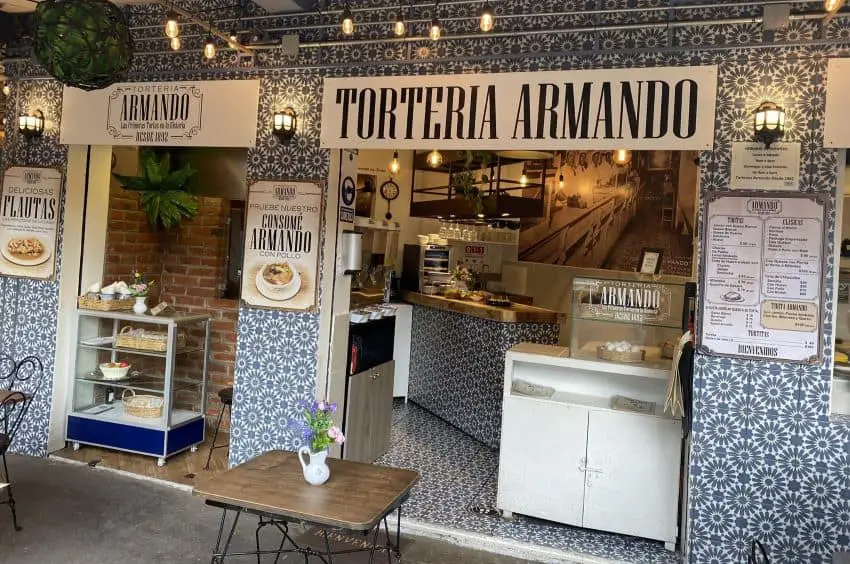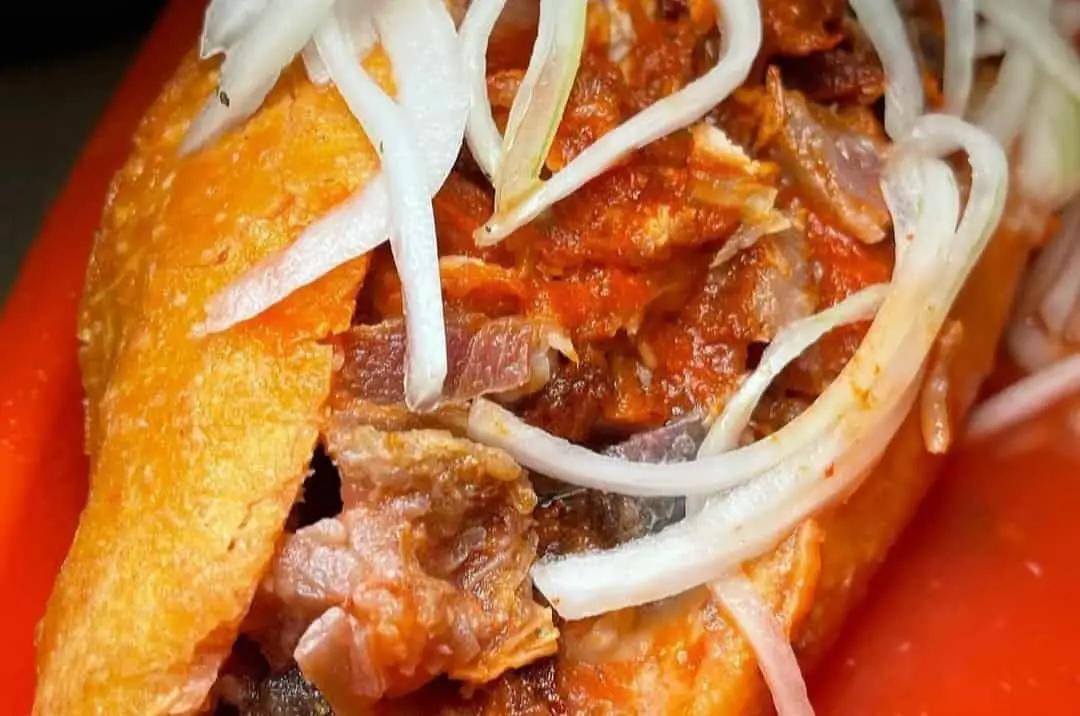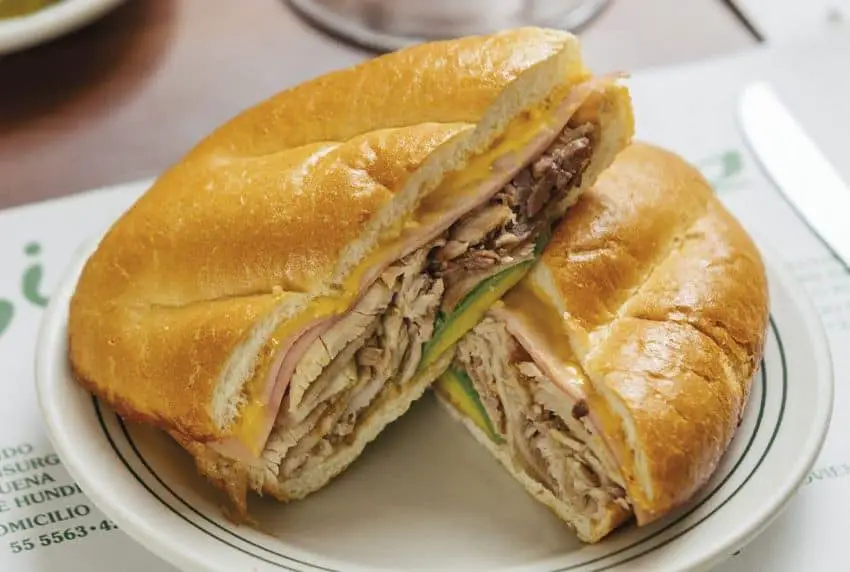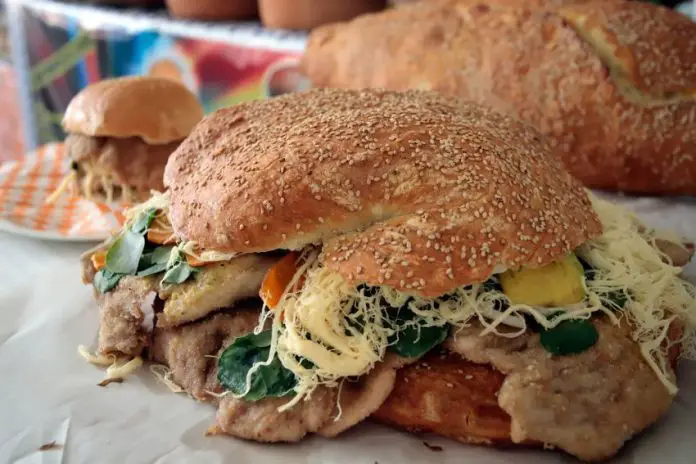México’s distinctive sandwich, the torta, is a comfort food classic. Like many of the nation’s other beloved foods, it has inspired countless regional variations. But the history of the torta begins, at least according to popular lore, with an 11-year-old prodigy. It’s tempting to compare Armando Martínez Centurión to Mozart in his prodigious talents at such a precocious age, but let’s face it: Mozart never created anything as delicious as a torta.
Young Armando began selling “tortas compuestas,” meaning sandwiches with multiple ingredients, in 1892 in Mexico City. The locations have shifted through the years, but remarkably, Torterías Armando is still in business over 130 years later. The first sandwiches were made with telera, an iconic Mexican bread type, filled with well-seasoned fixings ranging from ham, pork loin, and sardines to avocado, chipotle, and cheese.

Was Armando really the first tortero? Well, maybe. Baguette-style bread was introduced to México during the 1860s. If you had easily sliced sandwich bread, would you wait nearly 30 years to slap some meat, cheese, and condiments between it? To this point, a “torta compuesta” was mentioned as far back as 1864 in an advertisement in a Puebla-based newspaper, El Pájaro Verde. But Armando certainly opened the first tortería in Mexico City.
How the Bolillo and Telera were created in México
Notably, neither the bolillo nor the telera, now the two most common bread styles used for tortas, originated in Mexico City. Guadalajara and Andalusia, Spain are considered their true birthplaces, respectively. Camille Pirotte, a Belgian baker is the father of the former. He came to México during the Second French Intervention, when the Habsburg Maximilian was installed, briefly, as emperor with consort Carlota. Pirotte was assigned to a battalion in Guadalajara circa 1864, where he pioneered types of baguette bread that could be made without starter yeast. The naturally fermented bolillo and birote, a sourdough version of the torpedo-shaped specialty, are each credited to the intrepid baker, who also became famous for giving out two-day-old bread to the local poor.
Telera, a larger, more rounded bread distinguished by dual score marks across the top, was doubtless influenced by the Andalusian bread of the same name. There, it has been made in rustic fashion since the 17th century. In México, meanwhile, it’s baked with the same wheat-based dough as the bolillo and has been since at least 1871. Although the date of its arrival in Mexico City is unknown, it was in evidence when Armando Martínez made his first tortas in 1892. Today it’s probably best known as a sandwicher of popular Milanesa and Cubana tortas
Drowning in deliciousness – The first “Torta Ahogada”
Given Guadalajara’s lengthy history with the birote, it should come as no surprise that the city is responsible for perhaps the most famous sandwich made from this bread: the torta ahogada, or “drowned torta.” It took about sixty years from Pirotte’s birote breakthrough until someone first decided to pack the bread with pork carnitas and then submerge it in spicy tomato-based salsa for a softened texture and more piquant flavor. This invention during the 1920s is credited to Luis de la Torre, better known as “Güero.” The “drowning” aspect wasn’t planned but rather was the happy result of a torta slipping serendipitously into a salsa-filled container. The customer couldn’t have been happier, and a classic Mexican torta was born.

To say it soon caught on with the local populace is an understatement. In 2022, the statistics-based government bureau INEGI estimated that over 1,300 businesses in Jalisco were dedicated to this iconic local torta, with the vast majority centered in its historic home of Guadalajara. The proliferation of stands happened gradually. Güero’s son started one, then former employee Ignacio Saldaña another, and so and so on.
Like many Mexican foods, the torta ahogada has a reputation as a hangover cure. The presence of spicy chiles often contributes to such rumors, and it should be noted that ingredients like chile de árbol (a torta ahogada salsa staple), as much as beloved national bread types, distinguish the Mexican sandwich from those made in other nations.
The Torta Cubana and its mysterious origins
Almost all torta history is a mix of legend and fact, and the telera-based Cubana is no exception. For example, if you assume that because former Cuban leader Fidel Castro lived in exile in Mexico City during the 1950s he may have been an inspiration … well, you might be right. One theory of the sandwich’s creation is that Castro was a customer at La Casa del Pavo on Calle de Motolinia, and one day he asked for a sandwich featuring turkey breast, ham, cheese, and other ingredients.
Another theory, meanwhile, credits the Cuban Missile Crisis for the torta’s descriptive moniker. In this one, the creator was Mexico City tortero Leopoldo “Don Polo” Sánchez Preciado. Yet a third posits that the sandwich arose from one of the many torterías on Calle República de Cuba, and had nothing to do with Fidel Castro, Cuban sandwiches, or nuclear brinksmanship.

Nowadays, of course, it’s mostly a moot point. The torta Cubana is popular throughout CDMX and indeed all of México, thanks to its mix of assorted and often variable fillings. Depending on the maker, these may include everything from turkey, pork loin, ham, and milanesa de res to Oaxaca and Chihuahua cheeses, avocado, and cilantro. But if you need a date to place it in context on the torta timeline, it was likely created during the 1950s or ’60s.
Other distinctive regional torta variations
Guadalajara and Mexico City are inextricably linked to torta culture, but so, too, are countless localities where regional sandwich variations have sprung up. There’s the sesame-seeded cemita of Puebla, typically with milanesa de cerdo and cheese; the chorizo-stuffed torta de Malpaso, which originated in Zacatecas roughly contemporaneously with the torta ahogada in Jalisco; the torta de la barda, born in Tampico in the 1920s and now made with ham, shredded beef, queso amarillo, chorizo, refried beans, and avocado … among other tasty ingredients; and the torta de guacamaya from León, Guanajuato, which pairs chicharrón, pico de gallo, and a chile de árbol based salsa with classic bolillo bread.
There are many others, too. But you’ll have to discover those for yourself … if you haven’t already.
Chris Sands is the Cabo San Lucas local expert for the USA Today travel website 10 Best, writer of Fodor’s Los Cabos travel guidebook, and a contributor to numerous websites and publications, including Tasting Table, Marriott Bonvoy Traveler, Forbes Travel Guide, Porthole Cruise, Cabo Living and Mexico News Daily. His specialty is travel-related content and lifestyle features focused on food, wine and golf.
